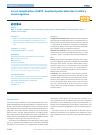Subscribe to RSS

DOI: 10.1055/a-1231-4758
A rare complication of ERCP: duodenal perforation due to biliary stent migration

Abstract
Background and study aims Perforation of the duodenal wall opposing the major papilla due to a migrated pancreatobiliary stent rarely has been described in the literature as a complication of endoscopic retrograde cholangiopancreatography (ERCP). Factors associated with perforation from migrated stents from ERCP are unknown.
Patients and methods This was a retrospective, observational study. Patients were identified from January 1, 1994 to May 31, 2019 in a prospectively maintained ERCP database.
Results Eleven cases of duodenal perforation from migrated pancreatobiliary stents placed at ERCP were identified during the study period. All cases involved biliary stents, placed for biliary stricture management. The perforating stent was plastic in 10 cases (91 %). This complication occurred in one in 2,293 ERCP procedures in which a pancreatobiliary stent was placed.
Conclusion This complication is more common with biliary stents compared to pancreatic stents. This may be related to the angle of exit of biliary stents being more perpendicular to the opposing duodenal wall and the near exclusive use of external pigtail plastic stents in the pancreatic duct. All perforating plastic stents were ≥ 9 cm in length. Longer stents may provide leverage for perforation with a migration event.
Publication History
Received: 18 December 2019
Accepted: 11 May 2020
Article published online:
21 October 2020
© 2020. The Author(s). This is an open access article published by Thieme under the terms of the Creative Commons Attribution-NonDerivative-NonCommercial License, permitting copying and reproduction so long as the original work is given appropriate credit. Contents may not be used for commecial purposes, or adapted, remixed, transformed or built upon. (https://creativecommons.org/licenses/by-nc-nd/4.0/)
Georg Thieme Verlag KG
Rüdigerstraße 14, 70469 Stuttgart, Germany
-
References
- 1 Johanson JF, Schmalz MJ, Geenen JE. Incidence and risk factors for biliary and pancreatic stent migration. Gastrointest Endosc 1992; 38: 341-346
- 2 Arhan M, Odemis B, Parlak E. et al. Migration of biliary plastic stents: experience of a tertiary center. Surg Endosc 2009; 23: 769-775
- 3 Bharathi RS, Rao PP, Ghosh K. Intra-peritoneal duodenal perforation caused by delayed migration of endobiliary stent: a case report. Int J Surg 2008; 6: 478-480
- 4 Coppola R, Masetti R, Riccioni ME. et al. Early retroduodenal perforation following endoscopic internal biliary drainage. Endoscopy 1993; 25: 255-256
- 5 Issa H, Nahawi M, Bseiso B. et al. Migration of a biliary stent causing duodenal perforation and biliary peritonitis. World J Gastrointest Endosc 2013; 5: 523-526
- 6 Katsinelos P, Kountouras J, Paroutoglou G. et al. Migration of plastic biliary stents and endoscopic retrieval: an experience of three referral centers. Surg Laparosc Endosc Percutan Tech 2009; 19: 217-221
- 7 Kriss M, Yen R, Fukami N. et al. Duodenal perforation secondary to migrated biliary stent in a liver transplant patient: successful endoscopic closure with an over-the-scope clip. Gastrointest Endosc 2015; 81: 1258-1259
- 8 Lo CH, Chung S, Bohmer RD. A devastating complication: duodenal perforation due to biliary stent migration. Surg Laparosc Endosc Percutan Tech 2008; 18: 608-610
- 9 Melita G, Curro G, Iapichino G. et al. Duodenal perforation secondary to biliary stent dislocation: a case report and review of the literature. Chir Ital 2005; 57: 385-388
- 10 Miller G, Yim D, Macari M. et al. Retroperitoneal perforation of the duodenum from biliary stent erosion. Curr Surg 2005; 62: 512-515
- 11 Nishiwaki M, Mizuno C, Yano K. et al. Retroperitoneal perforation caused by migration of a pancreatic spontaneous dislodgement stent into periampullary diverticula. Intern Med 2018; 57: 351-355
- 12 Paikos D, Gatopoulou A, Moschos J. et al. Migrated biliary stent predisposing to fatal ERCP-related perforation of the duodenum. J Gastrointestin Liver Dis 2006; 15: 387-8
- 13 Prachayakul V, Aswakul P, Kachintorn U. Duodenal perforation due to plastic stent migration successfully treated by endoscopy. Gastrointest Endosc 2012; 75: 1265-1266
- 14 Roses LL, Ramirez AG, Seco AL. et al. Clip closure of a duodenal perforation secondary to a biliary stent. Gastrointest Endosc 2000; 51: 487-489
- 15 Yaprak M, Mesci A, Colak T. et al. Biliary stent migration with duodenal perforation. Eurasian J Med 2008; 40: 154-156


